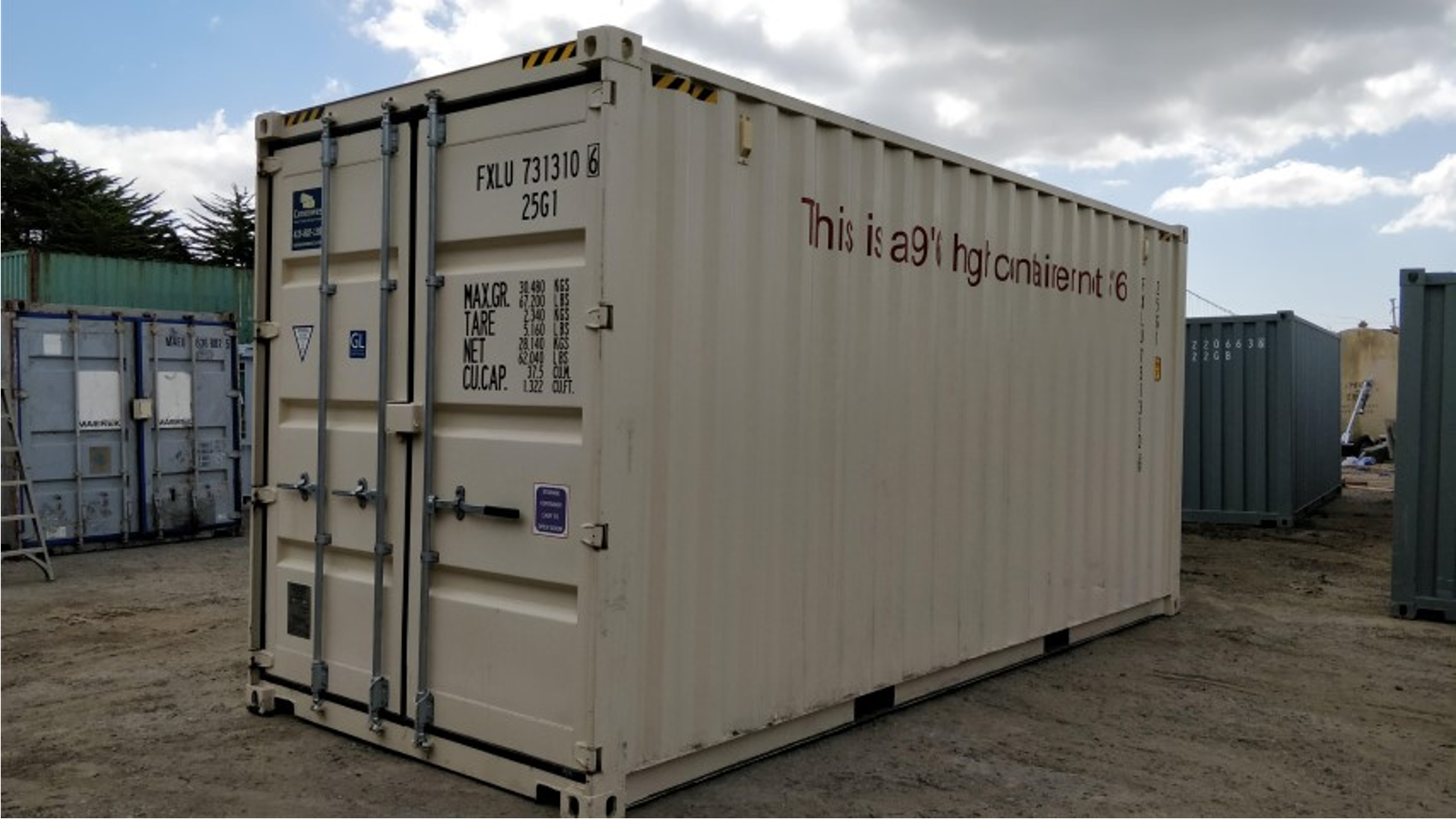California Shipping Container Zoning Laws, Permits & Building Code Requirements
Get a quoteCalifornia Shipping Container Zoning Law, Permit & Building Code Guide
Key Takeaways
- Shipping container homes are legal in California but must comply with zoning laws and building codes.
- Zoning permits are required and can be obtained by submitting a detailed project plan to local authorities.
- Building codes mandate fire safety, structural safety, insulation, and energy efficiency standards.
- Consulting local authorities and hiring professional contractors can help maintain compliance with regulations.
- Conexwest maintains a large inventory of durable, secure, and watertight containers and offers delivery and customization services.
Shipping Container Zoning Laws, Permits, & Building Code Requirements In California
Zoning Laws
- Permitted Uses: Shipping containers can be used for various purposes in California, including storage, residential units, and commercial spaces. However, they must comply with local zoning regulations which dictate where containers can be placed based on land use designations (residential, commercial, industrial).
- Temporary vs. Permanent Use:
- Temporary Use: Containers may be allowed as temporary structures for up to 180 days without extensive requirements, typically in conjunction with an active building permit.
- Permanent Use: For permanent placement, containers must adhere to stricter regulations and often require a building permit.
- Visibility and Aesthetics: Many jurisdictions in California require that containers be placed in a manner that minimizes visibility from public roads and neighboring properties. This often includes painting containers in colors that blend with the environment.
Building Code Requirements
- Building Permits: A building permit is mandatory for placing shipping containers on a property. The application must include detailed site plans showing the intended use and compliance with local codes.
- Construction Standards:
- Containers must meet California Building Code (CBC) standards, which cover structural integrity requirements.
- If used as residential units, they must comply with occupancy classifications and construction types as specified in the CBC.
- Utilities: Permanent utilities (water, electricity, gas) cannot be installed in containers unless they are part of a fully permitted structure.
- Setbacks and Lot Coverage: Containers must comply with local setback requirements for accessory structures, which dictate how far structures must be from property lines. The total number of containers allowed on a parcel may also be limited based on the size of the property (e.g., one container on lots under one acre).
Note: All shipping container installations must adhere to local zoning ordinances and building codes. If there is a conflict between local laws and state regulations, more stringent rules will apply.
Conexwest, a leader in shipping and storage solutions based in Northern California, offers new, used, and refurbished containers from 10ft to 45ft, with fast delivery within 3-7 days and container fabrication options like adding shelves and locks. We serve over 10,000 customers nationwide, including prestigious clients like the U.S. Navy and Google. As an ISO 9001 and AWS-certified company, we ensure top quality and competitive pricing. |
Tips For Complying With California’s Regulations

Consult with our experts to easily meet all your local requirements
- Check for HOA Rules: Review any homeowner association rules or deed restrictions that may affect the placement or appearance of shipping containers on your property.
- Prepare Detailed Site Plans: Submit comprehensive site plans with your permit application, including proposed container locations, dimensions, and intended uses.
- Follow Visual Mitigation Requirements: Check that your containers are placed to minimize visibility from public roads and neighboring properties, and consider painting them in neutral colors that blend with the landscape.
- Avoid Hazardous Materials: Standard containers should not store hazardous materials beyond what is permitted by local fire codes. For storing hazardous materials, we recommend you check out our hazmat container.
- Install on Proper Foundations: Place containers on a stable, prepared surface such as concrete or asphalt to meet structural integrity requirements.
- Consult with Local Authorities: Engage with local planning and building departments early in the process to clarify any requirements or potential challenges related to your project.
Choose Conexwest For Your Shipping Container Needs

Conexwest has various container types including hazmat, open top, open side, and reefer
For all your shipping container needs, we stand out as a reliable and experienced provider. Here's why you should choose us for your shipping container needs:
- Wide Range of Options: We have a variety of new, used, and refurbished containers in sizes ranging from 10ft to 45ft.
- Customization Services: No matter if you want to turn your container into an office, workshop, or pop-up shop, we can customize your container the way you like.
- Fast Delivery: We can deliver containers within 3-7 days so you can start your project with minimal delays.
- Competitive Pricing: As a vertically integrated company, we fabricate, sell, rent, and service containers ourselves. As such, we can provide competitive pricing without compromising on quality.
- High-Quality Standards: With our strong warranty of up to 10 years in place, you will receive a durable, secure, and weatherproof container.
How to Get Started with Conexwest
Visit our website to browse the inventory and submit a quote request by providing your zip code and unit details. Our dedicated team will assist you in planning and executing your project. Once you've selected your container and customization options, we will handle the delivery and setup for a seamless experience from start to finish.
Frequently Asked Questions (FAQs)
- Are shipping container homes legal in all areas of California?
Shipping container homes are legal in California, but they must comply with local zoning laws and building codes. It's essential to check with your local planning and zoning office so your project meets all requirements. Some areas may have restrictions or additional regulations, so it's important to be informed before starting your project.
- How long does it take to get a zoning permit?
On average, the review process can take a few weeks, and submitting a detailed and accurate project plan can help expedite the process. It's also a good idea to consult with local authorities early in the process so you have all the necessary information and documentation.
- How long can I keep a shipping container on my property without a permanent permit?
In many areas of California, you can use a shipping container temporarily (usually up to 180 days) with a temporary use permit, but this varies by location.
- Are there different regulations for using containers as homes versus storage?
Yes, regulations can differ significantly. Residential uses typically face stricter building codes and zoning laws.
- What kind of warranty does Conexwest provide?
Our new ISO shipping containers come with a 10-year warranty, while used cargo-worthy containers are covered for 5 years. All our containers are thoroughly inspected and come with a leakproof guarantee. Read this page to learn more.
